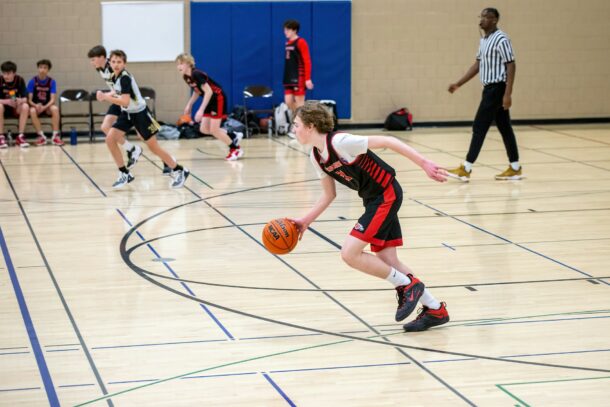As a parent or new coach, it’s easy to feel uncertain during the early stages of youth basketball development. You might see your child nail every drill in practice or training, but then freeze or fall short in games. It can be frustrating. However, progress in youth sports isn’t always obvious.
In fact, true development often shows up in small, gradual ways. That’s why it’s important to know what signs to look for. With the right mindset and focus, you’ll spot the growth even when the stat sheet doesn’t show it. Let’s explore what progress really looks like—and how to support it along the way.
1. Understand That Youth Basketball Development Is Not Linear
Many parents expect a straight upward path. Unfortunately, that’s not how learning works. Improvement happens in bursts, with plateaus in between. During the “flat” times, it might feel like nothing is changing.
In reality, your child is likely absorbing skills and preparing for the next leap. That’s why it’s important to be patient. If they’re showing up, practicing, and trying, they are getting better.
2. Look for Small Wins in Every Game
Don’t just focus on points scored. Progress can look like:
- Taking a second dribble under pressure
- Breaking a press without panicking
- Attempting a move they’ve trained on, even if it fails
Each of these is a victory. During youth basketball development, these little steps often matter more than game stats.
3. Recognize the Difference Between Practice and Game Pressure
In practice, the stakes are low. Kids are relaxed. So, it’s no surprise they nail every behind-the-back dribble or euro step. But once a defender shows up and the crowd is watching, everything changes.
The pressure adds a layer they aren’t used to yet. That’s normal. Learning how to apply skills under pressure is a key part of development.
Join the TeachHoops Community

TeachHoops.com offers a unique platform for coaches to share experiences and gain new insights. Learn from others who have navigated similar challenges. It’s an invaluable resource for those looking to:
- Broaden perspectives
- Refine strategies
- Enhance their leadership and motivational skills
Step into Enhanced Coaching
Win the Season: Basketball Masterclass!

4. Add Pressure to Practice to Build Confidence
One of the most effective ways to support youth basketball development is to increase intensity in practice. Try small-sided games like 3-on-3. Or, add time limits and scoring constraints.
When kids learn to handle pressure in a controlled setting, they’re more likely to succeed in real games. It’s why we run scrimmages and simulate late-game situations.
5. Know That Mental Growth Comes First
Sometimes the body just isn’t ready yet. Your child may understand how to finish strong at the rim, but lack the strength to do it. That doesn’t mean they’re behind. It means the brain is ahead of the body.
Eventually, when those two sync up, everything clicks. During youth basketball development, this mental foundation is crucial.
6. Trust the Process and Celebrate the Love of the Game
If your child is working with a trainer, going to practice, and playing for fun at home, that’s a win. Whether it’s driveway shooting or playing in weekend tournaments, they’re investing in themselves. Progress is happening.
The best sign of development? They still love the game.
Final Thoughts on Youth Basketball Development
Stay patient. Stay positive. Look for progress beyond the scoreboard. As long as your child is engaged and working hard, they’re on the right track. And when the game starts to slow down for them—when all those drills begin to show up in real time—you’ll know the journey was worth it.
Latest Posts
- How AI Coaching Prompts Can Transform Your Youth Basketball Program
- AI-Backed Basketball Coaching Strategies: Why Coaches and Players Should Adopt ‘The Coaching Habit’
- AI Tools for Basketball Coaches: Saving Time and Improving Your Program
- Complete Offseason Basketball Workout for Youth Players
- The Best Youth Basketball Passing Drills Every Coach Should Know





